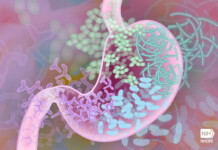Looking back on the nutrition articles we have published so far in Cycling Utah, there is a major topic that needs to be addressed… FAT. The three letter f-word, or is it? For athletes, establishing healthy eating habits starts from having a good understanding of the foods that we eat. The 3 big things our bodies need are called macronutrients: carbohydrate, protein, and fat. From a variety of food, the macronutrients deliver calories that our body uses as energy to think, play, move, work, focus, and exercise.
We have discussed the roles, functions, and foods of carbohydrates and protein in previous articles, so now it’s time to break down fat. The purpose of this month’s topic is to provide a basic understanding of dietary fat – food sources, functions, and tips on what foods to choose to get the appropriate amounts of fat for your size and exercise needs, and from quality sources. Fat often gets a bad reputation as people associate fat in our diet with fat on our bodies. Just like carbohydrate and protein, fat is an important nutrient necessary for overall health. The key to optimal fat utilization by the body is understanding which fats to choose.
Food Sources
Similar to protein sources, we break fat into two categories: plant and animal sources. We get fats from plants such as nuts, seeds, avocado and vegetable oils (canola, olive, peanut, sesame, walnut, safflower, etc.). Animal products include meats, dairy, fatty fish, and egg yolk.
And lets not forget the foods where fat calories can creep up and bite: processed foods. Cookies, crackers, baked goods, and salad dressings all contain fats, whether they are plant or animal sources. For example, a cookie can have fat calories from any or all of the following: oil, egg, butter, chocolate chips, any type of nut, peanut butter, or a cream filling. Even vegan cookies, which won’t have any of animal products, still have fat from the plant-based alternatives such as coconut and flax, chia, or hemp seeds. So being aware of what foods contain fat is the first step in being able to determine how much of any food to consume.
Fat goes further than carbs or protein, as 1 gram of fat has 9 calories, while carbohydrates and proteins each have 4 calories per gram. So, using fat as a sprinkle for flavor to our meals and snacks can go a long way in our total caloric need each day.
Fat Function
Be sure to recognize now that fat is not a bad thing! We break down fats via digestion and use them for many vital functions in the body.
- Fat provides energy during low to moderate intensity exercise (i.e., walking, jogging, easy cycling). At an endurance pace, we burn about 50% carbohydrates and 50% fats. The higher the intensity, the more carbohydrates we use. Until we are anaerobic, which is when lactic acid is generated, and only lasts ~15 seconds, then it’s back to carbs and fats for fuel.
- Fat encircles nerve cells and plays a role in sending messages throughout the body, like telling muscles to contract, so it is crucial that we have enough fat in our diet that we don’t break down nerve tissue to fuel or exercise.
- Fat forms the outer wall of every cell in your body and aids in cell function. So when thinking about the fats you ingest, remember this. You want fats that are fluid at room temperature, because we want our blood cells, liver cells, skin cells, digestive tract, etc. to be soft and function well together, as opposed to being solid. This idea lends itself to the phrase “you are what you eat” in the sense that if we consume a lot of butter or vegetable shortening or even coconut oil (a highly hydrogenated oil), our cells will have solid coatings, causing further health problems i.e., atherosclerosis.
- Omega 3 fatty acids, found in in fish, avocado, olive oil, and nuts, can help improve heart health and reduce inflammation in the body. I call Omega 3s “nature’s Ibuprofen” because of its anti-inflammatory affects. Diets that are high in these type of healthy fats help us lower cholesterol and LDL (low-density lipoprotein or bad cholesterol) levels, and increase HDL (high-density lipoprotein or good cholesterol) levels, hence the “heart healthy” claims.
- Fat provides flavor and texture to food and meals. That is why bacon, cheese, avocado, and chocolate are used: to enhance the flavor and make our palate happy! The challenge is to be sure you don’t over-indulge on the amounts. Use the fats for flavor, but keep the portion size reasonable. A good rule of thumb is 1 oz. of the fat food at a time, and limit to 3 oz. per meal. So mix, match, and enjoy… just be smart about it.
- Allows for absorption of fat-soluble vitamins and minerals. Specifically Vitamins A, D, E, and K. So we must get adequate amounts of fats in our daily diet in order to utilize these vitamins.
Tips & Tricks to choosing fats
For general, everyday health, be sure to choose lean meat and limit red meat consumption to once per week. Too much saturated fat, as found in animal products, or are solid at room temperature, can increase cholesterol and increase risk for heart disease. When choosing dairy products, opt for skim or 1% because low to no fat is all you need. The nutrients are in the milk, not the fat. Milk alternatives (almond, soy, rice, etc.) are great substitutes with all the calcium and nutrition you need.
Be sure to favor fresh, whole, unprocessed foods vs. processed and packaged goods. The trans fats often found in processed foods clog arteries, decrease fertility, and increase inflammation. Incorporate more healthy fats as possible each day: olive, canola, & peanut oil, almonds, walnuts, avocado, fish. Choose aged cheeses and use sparingly. A sharp, flavorful cheese can flavor dishes nicely in smaller quantities than milder cheeses. Again and again, the theme of use fat to enhance flavor, rather than make it the main course.
Sport Specific Tips
An athlete’s diet is a low saturated fat diet, but not a no-fat diet. Incorporate healthy fats as part of an overall varied and balanced eating plan. Fat provides energy for lower-intensity exercise and is a significant fuel source for endurance and ultra-endurance events. Remember that Omega-3 fatty acids (flax seeds, walnuts, salmon, fish oil supplements) provide valuable nutrients and reduce inflammation. Limit fatty meat and fried foods.
Reconsider traditionally low-quality, high-fat fast food options prior to training or competition in favor of a high-carbohydrate meal with low amounts of healthy fat. Fat takes longer to digest than carbohydrates, so pre-ride/race meals should be low in fat content so you are ready to roll. In conclusion, to answer the title question, is fat our friend or foe? It is our friend, but just be sure to choose your friend wisely.
Breanne Nalder, MS, RDN has a Master’s degree in nutrition with an emphasis in sports dietetics at the University of Utah. She is a Registered Dietitian Nutritionist, certified ACE (American Council on Exercise) fitness instructor, and races for DNA Cycling p/b K4 Racing as a category 1 road cyclist. For personal nutrition coaching, you can reach Breanne at 801-550-0434 or breanne@plan7coaching.com.






